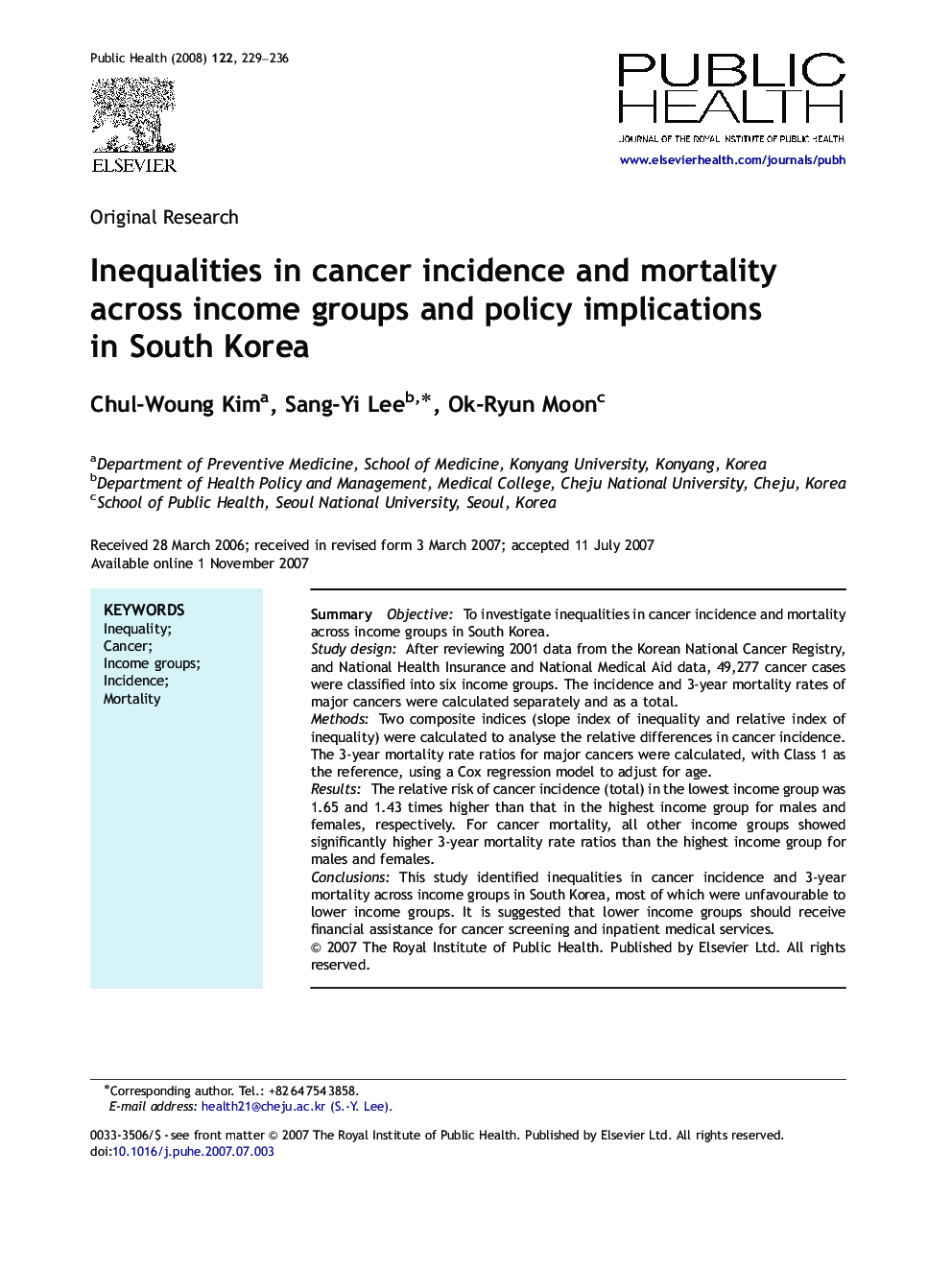| Article ID | Journal | Published Year | Pages | File Type |
|---|---|---|---|---|
| 1089157 | Public Health | 2008 | 8 Pages |
SummaryObjectiveTo investigate inequalities in cancer incidence and mortality across income groups in South Korea.Study designAfter reviewing 2001 data from the Korean National Cancer Registry, and National Health Insurance and National Medical Aid data, 49,277 cancer cases were classified into six income groups. The incidence and 3-year mortality rates of major cancers were calculated separately and as a total.MethodsTwo composite indices (slope index of inequality and relative index of inequality) were calculated to analyse the relative differences in cancer incidence. The 3-year mortality rate ratios for major cancers were calculated, with Class 1 as the reference, using a Cox regression model to adjust for age.ResultsThe relative risk of cancer incidence (total) in the lowest income group was 1.65 and 1.43 times higher than that in the highest income group for males and females, respectively. For cancer mortality, all other income groups showed significantly higher 3-year mortality rate ratios than the highest income group for males and females.ConclusionsThis study identified inequalities in cancer incidence and 3-year mortality across income groups in South Korea, most of which were unfavourable to lower income groups. It is suggested that lower income groups should receive financial assistance for cancer screening and inpatient medical services.
